From coronavirus to consent: Your definitive guide to the standout moments at the AW20 fashion shows
Designers reacted to tough times by using fashion as a means of escapism, Sarah Young reports

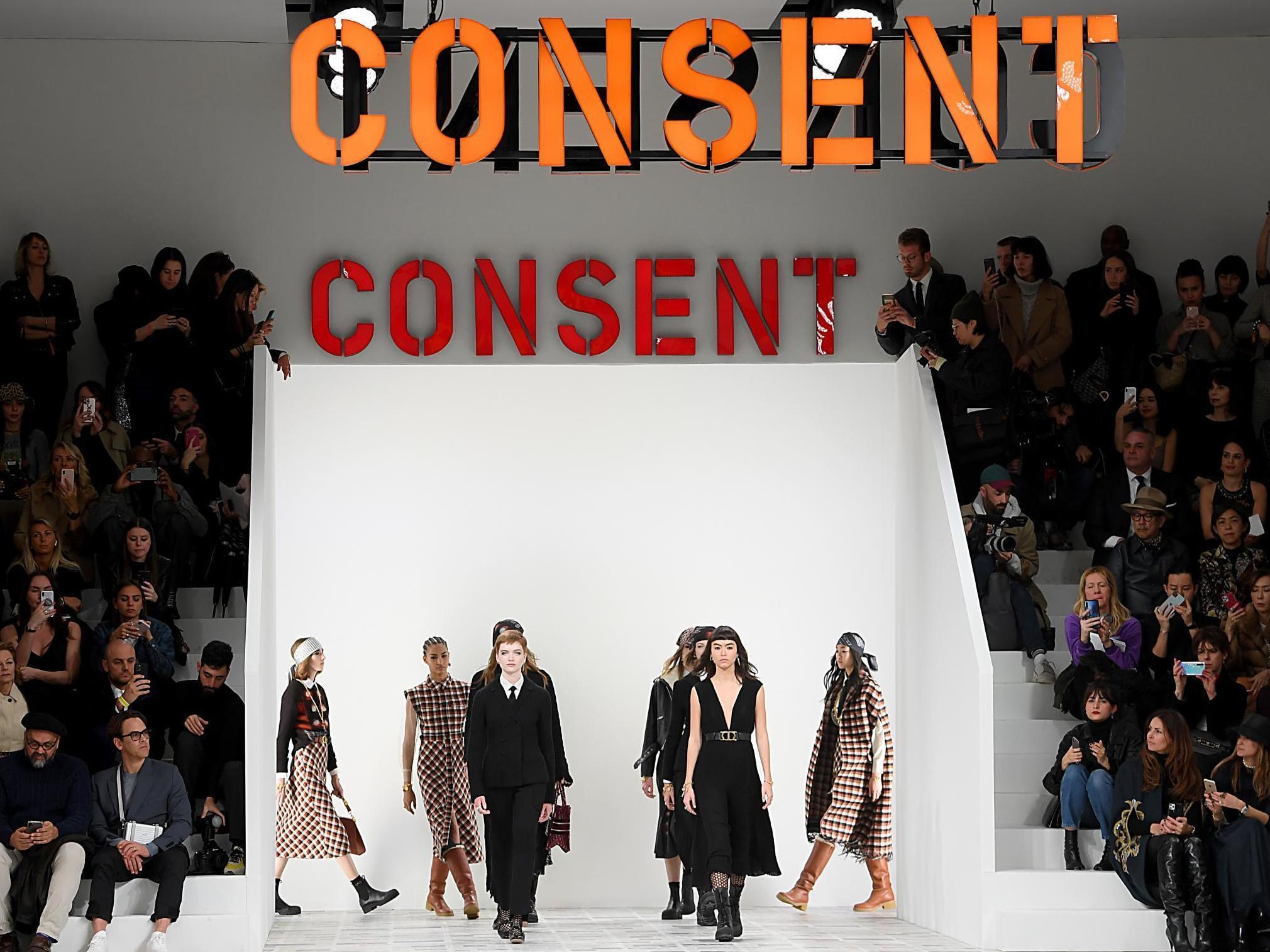
Your support helps us to tell the story
From reproductive rights to climate change to Big Tech, The Independent is on the ground when the story is developing. Whether it's investigating the financials of Elon Musk's pro-Trump PAC or producing our latest documentary, 'The A Word', which shines a light on the American women fighting for reproductive rights, we know how important it is to parse out the facts from the messaging.
At such a critical moment in US history, we need reporters on the ground. Your donation allows us to keep sending journalists to speak to both sides of the story.
The Independent is trusted by Americans across the entire political spectrum. And unlike many other quality news outlets, we choose not to lock Americans out of our reporting and analysis with paywalls. We believe quality journalism should be available to everyone, paid for by those who can afford it.
Your support makes all the difference.Typically a four-week parade of buoyant tulle, flashing paparazzo bulbs and endless streetstyle peacockery; fashion month is a cloistered industry event that sees designers display their latest creative work to a sea of press, buyers and stylists.
However, this season has been quite unlike any other, with showgoers contending with everything from the gale force winds of Storm Dennis to Extinction Rebellion protests and the coronavirus outbreak.
However, there have also been plenty of welcome distractions for fashion fans over the last four weeks, including handbags that looked like slices of cake, celebrity catwalk cameos from the likes of Miley Cyrus and the news that Belgian designer Raf Simons would be joining Prada as co-creative director alongside Miuccia Prada.
Read on for The Independent's picks of the standout moments and trends from the autumn/winter 2020 shows.
Coronavirus prompted cancellations and quarantine
Ever since news of the virus outbreak began in late January in Wuhan City in the Hubei Province of China, cases have appeared in roughly 80 countries, including the big four which make up the sartorial spectacle that is Fashion Month.
The outbreak of the coronavirus in Northern Italy coincided with Milan Fashion Week, prompting a number of designers to postpone or cancel their shows, including Giorgio Armani who chose to live stream the fashion house’s collection behind closed doors in an empty theatre to “avoid exposing guests to any dangers to their health”.
The Fashion Week rumour mill has also prompted speculation that fashion buyers and editors, including Vogue US editor in chief Anna Wintour, have been encouraged to self-quarantine upon their return as companies moved to stop the spread of covid-19. It is understood that Wintour is monitoring for symptoms for 14 days but will return to work following this period.
With Cruise season fast-approaching, it remains unclear as to whether more fashion houses will be forced to cancel their upcoming shows.
So far, Prada, Gucci and Giorgio Armani have all issued statements announcing that they will not be going ahead with their scheduled Cruise 2021 offerings.
A spokesperson for Gucci said the brand’s decision was in light of “the ongoing uncertainty prompted by the coronavirus outbreak” and that is was “a precautionary measure”.
“A decision on the new timing and location of the show will be announced at a later date, once the situation becomes clearer,” the statement continued.
“At this time, our thoughts are with all of those affected around the world.”
Dior hosted a #MeToo-inspired show
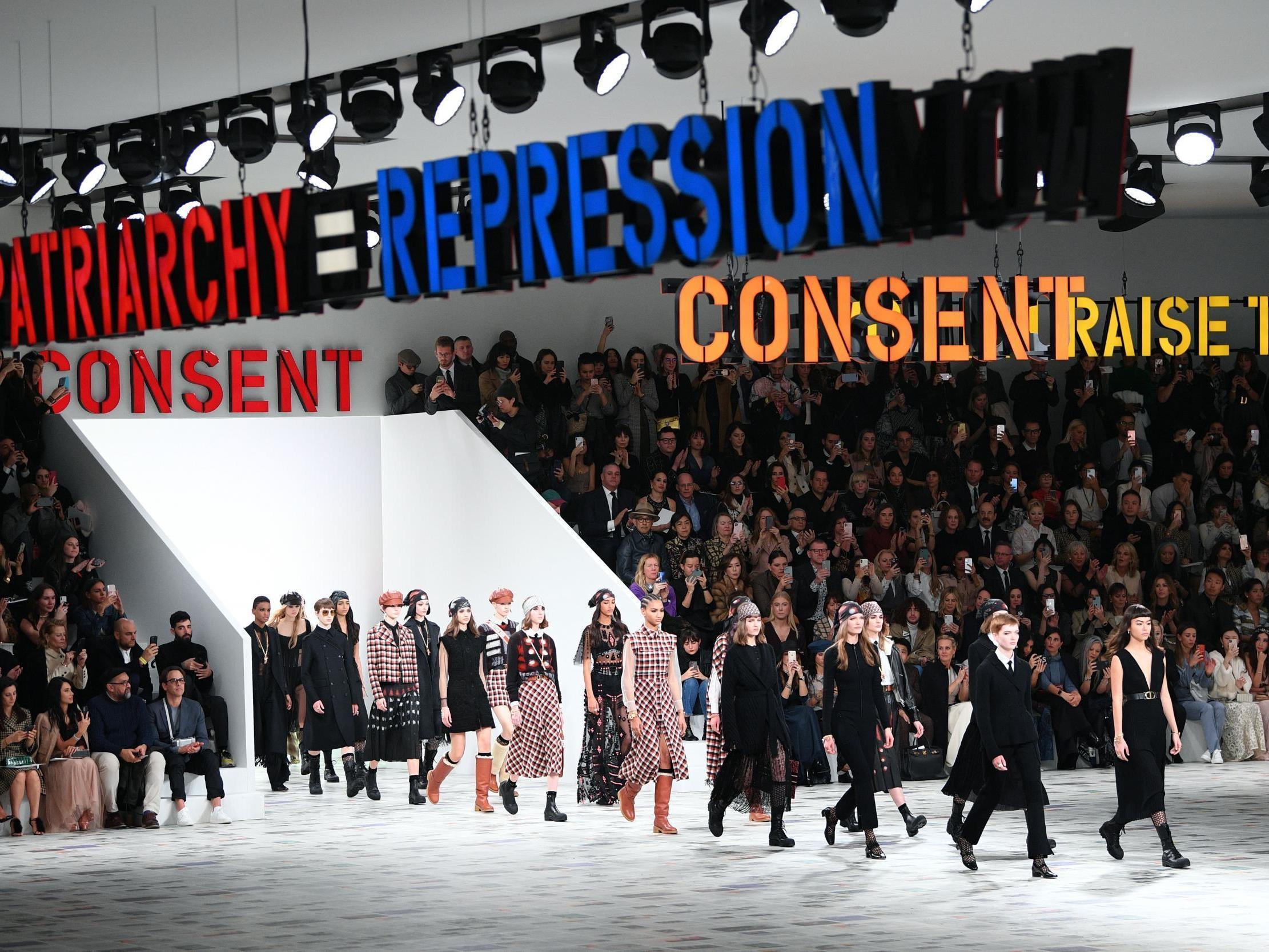
Feminist statements have become somewhat of a cornerstone of Maria Grazia Chiuri's collections for Dior since she joined the ranks of the French fashion house as creative director in 2016. And, while this season was no exception, it felt far more poignant than those that came before it given that less than 24 hours earlier Harvey Weinstein was convicted of rape following his trial.
The runway, designed in collaboration with a collective of feminist artists working under the pseudonym Claire Fontaine, was hung with giant light-up protest signage that read, “Consent’, “Women Raise the Uprising” and “Women’s Love Is Unpaid Labour”.
The artists said that the Dior collaboration “revolved around the performative use of language typical of non-reformist feminism”.
The set also featured a newspaper-covered floor installation which was designed to reflect how the noise of the outside world affects the world of art, while Chiuri’s moodboard for the collection celebrated women from the 1970s such as Bianca Jagger.
The creative director’s inspirations were visible on the runway where models were dressed in masculine-inspired waistcoats, trouser suits, printed bandanas, wide cut denim fares and fringed cape coats - all of which formed subtle expressions of empowerment and a playful take on borrowed-from-the-boys style.
Latex
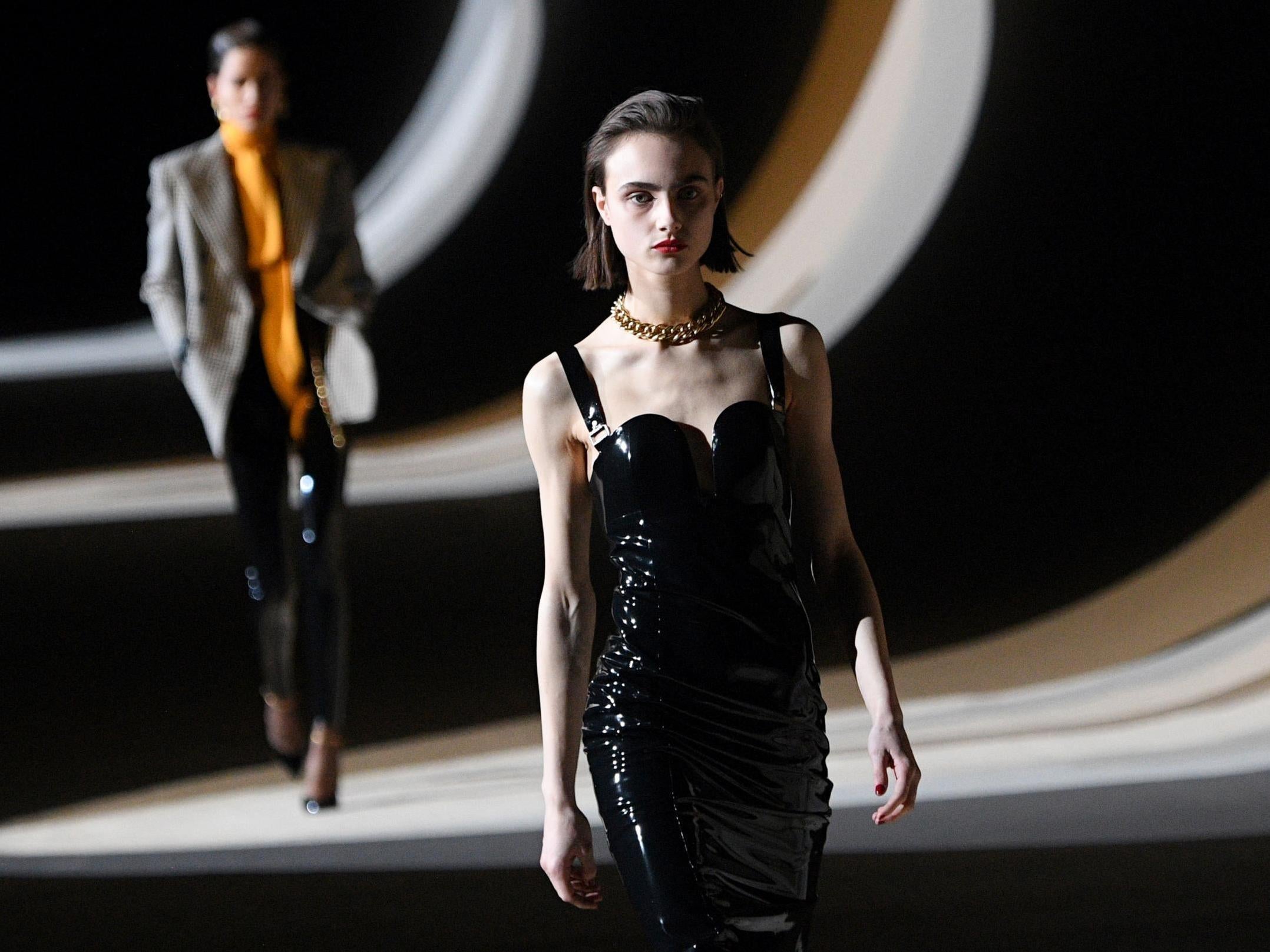
This season saw designers and showgoers attempt to bring latex out from the underground BDSM scene and into the mainstream
At Saint Laurent, latex leggings and wipe-clean pencil skirts were paired with pussybow blouses and killer heels, while young London-based designer Richard Quinn juxtaposed high-shine gimp masks and trousers with his signature feminine florals.
Elsewhere, Kim Kardashian West and her sister Kourtney Kardashian became the first to wear Balmain’s latex suits which came fresh off the label’s autumn/winter 2020 runway just two days earlier.
The reality TV stars sported the caramel and chocolate-coloured looks at Kanye West’s Sunday Service over Paris Fashion Week, with Kim later changing into two more Balmain latex looks during the course of the same day.
The second outfit featured a latex burgundy jacket designed with accentuated shoulder pads, while the third was a head-to-toe pink bodysuit with matching gloves.
While the trend found itself back on the catwalk, whether it has the ability to shed its fetishistic associations and begin infiltrating the mainstream remains to be seen.
The climate crisis crowded the catwalk
With coronavirus dominating news feeds all over the globe, it seemed as though the conversation surrounding the climate crisis had almost completely fallen off the runway radar this season. That was, until Demna Gvasalia brought it to the forefront of everyone’s minds with a set that indicated what the world might look like if it continues on the same path.
The creative director of Balenciaga purposely flooded the centre of the amphitheatre at the Cité du Cinema film studio in reference to the fact that ocean levels are rising with the first few rows of seats submerged under water.
Meanwhile, as models splashed through the shallow waters, a giant LED screen suspended on the ceiling played a succession of ominous videos that reflected eerily onto the water including boiling lava, flames and a swarm of crows.
In London, environmental group Extinction Rebellion made their opposition to Fashion Week clear by staging a protest calling for the event to be cancelled using coloured smoke bombs and creating human blockades in the roads outside the British Fashion Council’s venue.
A number of other designers showed their commitment towards reducing their carbon footprint with Mulberry presenting its recently-launched “100 per cent sustainable leather bag”, the profits of which are being donated to the World Land Trust, and accessories designer Anya Hindmarch filling her London stores with 90,000 plastic bottles to represent the number of bottles purchased globally every six seconds.
Earlier this year, Copenhagen Fashion Week also launched its sustainability action plan that requires brands to meet a range of targets or face exclusion from the show schedule. Brands will have three years to meet the event’s sustainability standards, which include introducing zero-waste set designs, pledging not to destroy unsold clothes and using at least 50 per cent organic or recycled textiles in their collections.
Celebrities commandeered the catwalk
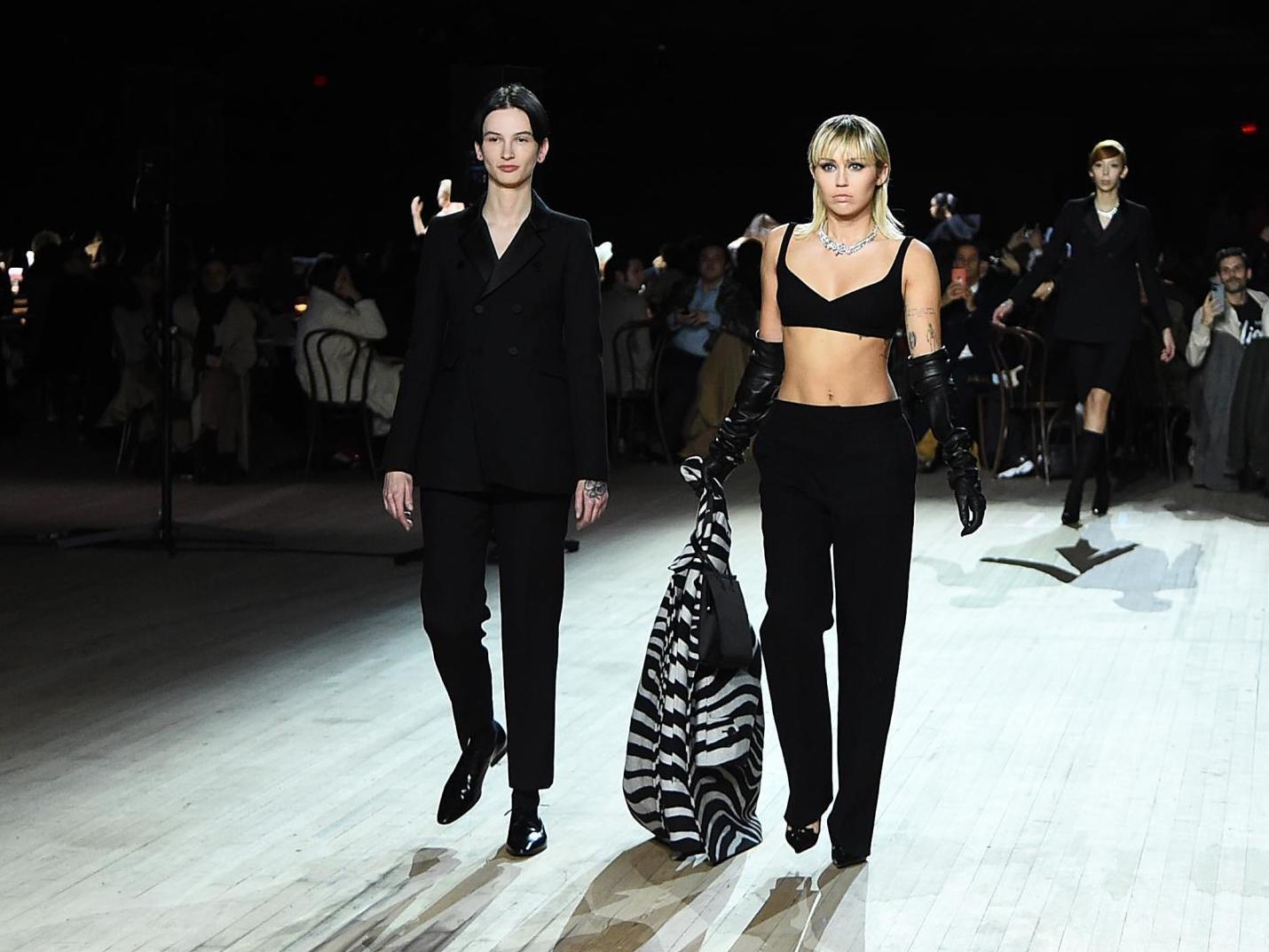
When it comes to Fashion Week, celebrities are often confined to the front row but this season a host of A-listers set out to prove they have what it takes to dominate the catwalk too.
In New York, Miley Cyrus added runway model to her impressive CV by appearing as part of Marc Jacobs’ autumn/winter 2020 show. The singer walked side-by-side with model Juno Mitchell, wearing a black bralette and matching trousers with leather gloves and a zebra jacket dragging behind her.
The following week, Girls star Lena Dunham made her runway debut at London Fashion Week for 16Arlington sporting wet-look hair and a mini dress made from black and gold jacquard silk. Meanwhile, in Paris, supermodel sisters of-the-moment Gigi and Bella Hadid were joined on the catwalk at Off-White by their mother, Yolanda, who was a familiar face during fashion weeks in the 1980s and 1990s. The 56-year-old stole the spotlight from her daughters wearing a white blazer detailed with graffiti and a pair of black trousers.
But perhaps the most talked about celebrity cameo came courtesy of Kanye West’s daughter, North West, who took centre stage at the Yeezy Season 8 show. As the models took their final walk, the six-year-old performed a rap with her father by her side, singing the lyrics: “You know my name is Northy, this is my style. Look at my shoes, they’re new and cool. See my school. I’m new, walk to the streets, yeah yeah yeah. What are those?”
Back to black
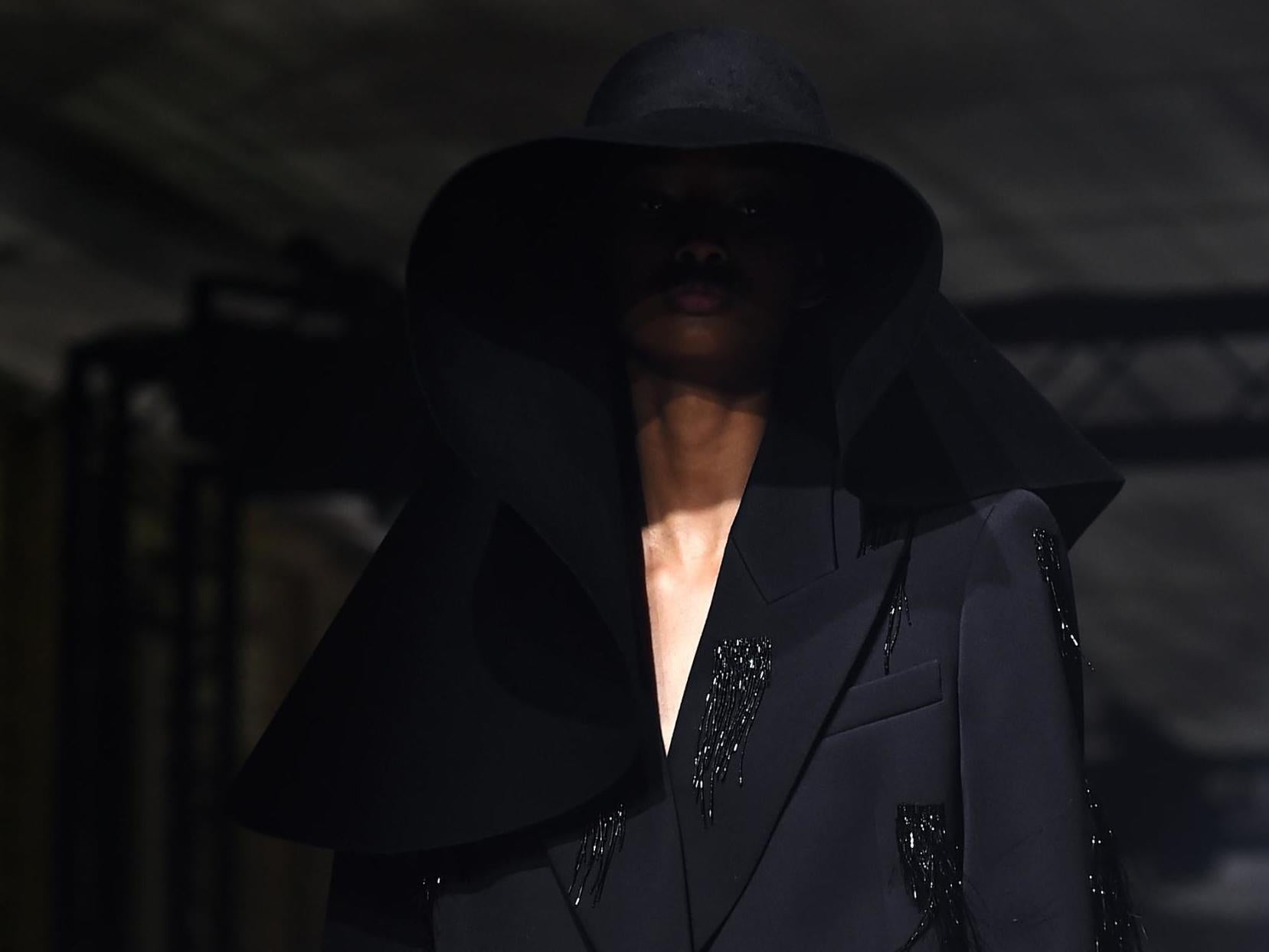
In true pathetic fallacy, fashion month was shrouded in a veil of darkness this season as the industry’s go-to shade made its way back onto the catwalk following an arduous battle with maximalism.
At Balenciaga the blackout was seen on long black robes and ornate leather dresses. Demmna Gvasalia said backstage that this was a comment on the times we live in but also served as a “celebration of fashion”.
“It’s the blackest show I ever did. Black is the colour of Balenciaga; Cristobal’s early work was all in black velvet,” Gvasalia said, before citing the Orthodox religion, young priests and monks as his other inspirations.
Elsewhere the Valentino show opened with 25 all-black looks – a move that Pierpaolo Piccioli said was inspired by individuality and uniform. The fashion house’s usual typical riot of colour and ruffles was replaced with black leather tailoring, wide-leg charcoal trousers and lace-up stomping boots.
At Givenchy, Clare Waight Keller delivered a dark and moody collection that kicked off with a head-to-toe black look topped with a dramatic wide-brimmed floppy hat that obscured the model’s face. Backstage, the designer’s moodboard was filled with images of French arthouse film posters and black-and-white photographs by Portuguese artist Helena Almeida which all made to a graphic film noir collection.
Gucci gave guests a look behind-the-scenes

This season, Alessandro Michele subverted the traditional catwalk show to give showgoers a sneak peek into the elusive and often closed off world of fashion.
Guests were invited to enter the venue via a backstage door where they were greeted by a mob of models getting their hair and makeup done in preparation for the show. Then, once attendees were finally seated, a pink curtain lifted from a circular glass wall to reveal a series of hanging rails holding the models’ outfits and Gucci employers standing ready to dress them.
The designer put what typically lies behind the curtains for all to see, with models getting changed into their looks in front of guests before staring out at the audience like shop mannequins.
When the models filed out, their places were taken by Gucci’s ateliers before Michele eventually emerged from the centre of the stage and took his final bow.
Join our commenting forum
Join thought-provoking conversations, follow other Independent readers and see their replies
Comments